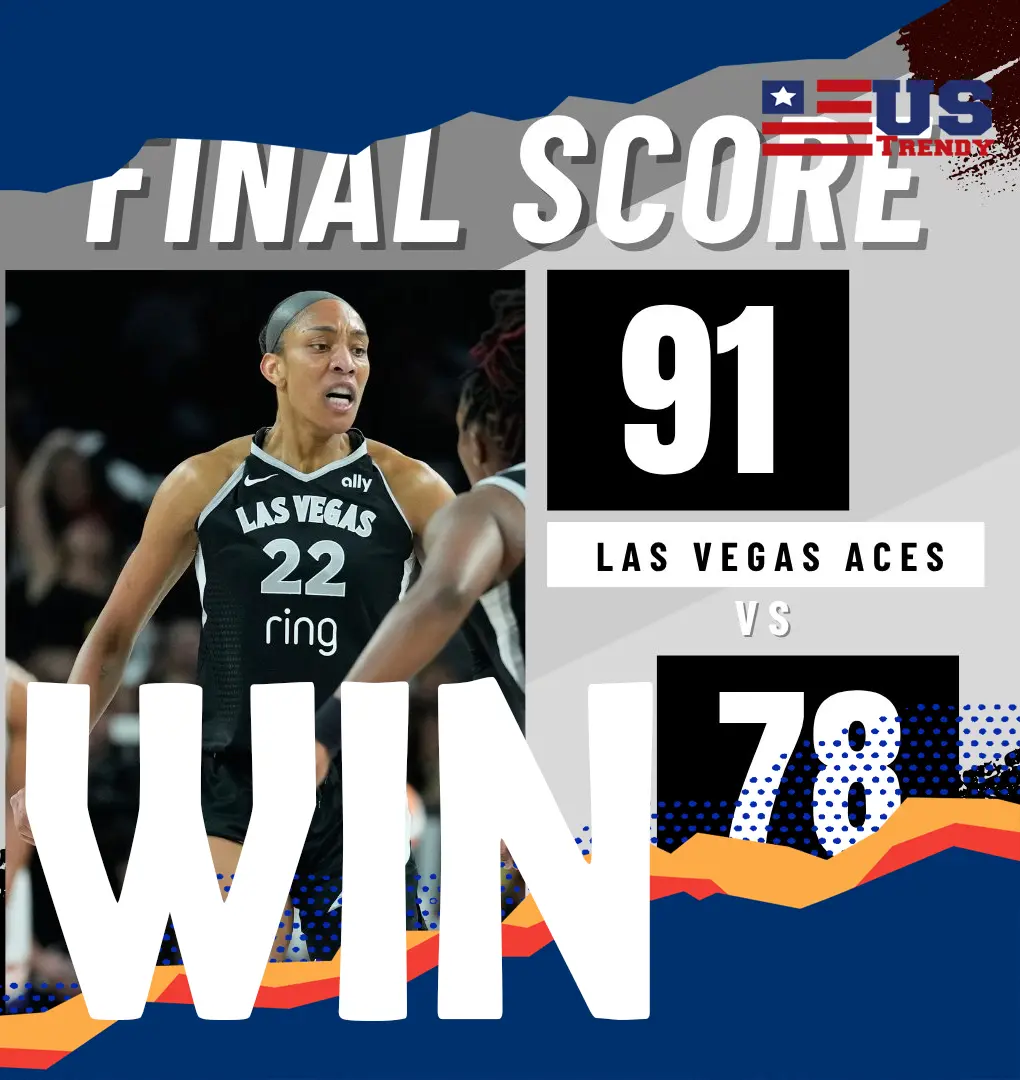Aces vs Mercury: A’ja Wilson hit a last-second turnaround jumper as the Las Vegas Aces beat the Phoenix Mercury 90–88 in Game 3 of the 2025 WNBA Finals. Read the full recap, player stats, injury updates (Satou Sabally concussion), tactical analysis, and what’s next.
Big picture: what happened (TL;DR)
A’ja Wilson poured in a massive 34 points and grabbed 14 rebounds, and with 0.3 seconds left she hit a seven-foot turnaround jumper that delivered a dramatic 90–88 Game 3 win for the Las Vegas Aces over the Phoenix Mercury — pushing the Aces to a 3–0 lead in the 2025 WNBA Finals and one victory away from a third championship in four seasons.
The Mercury staged a furious fourth-quarter comeback — keyed by veteran DeWanna Bonner and Kahleah Copper — and briefly tied the game in the dying seconds, but Wilson’s final bucket ended the comeback and left Phoenix with a massive uphill climb. Meanwhile, key Phoenix forward Satou Sabally left the game with a head injury and entered concussion protocol, a development that clouds the Mercury’s outlook into Game 4.
The final sequence (minute-by-minute drama)
Late in the fourth the Aces led by a narrow margin after a game of runs — Las Vegas jumped out early but Phoenix clawed back. In the final 30 seconds the Mercury tied the game on DeWanna Bonner’s free throws, and then after a defensive stop the Mercury had the ball back with a chance to take the lead. Instead, the Aces scrambled and set up A’ja Wilson for the floaty turnaround jumper over heavy pressure — it fell with 0.3 seconds left and sent the Aces’ bench and traveling fans into delirium.
That play, and the emotional swing, was the headline — but the game was shaped by a tactical battle between Vegas’ size and interior presence (Wilson, Megan Gustafson, NaLyssa Smith) and Phoenix’s wing scoring (Kahleah Copper, Satou Sabally, DeWanna Bonner). The Mercury’s late surge exposed the Aces’ vulnerabilities in closing out quarters, but Wilson’s late heroics covered for a team that has learned to win tight postseason games.
Box score highlights — who produced
- A’ja Wilson (Aces): 34 points, 14 rebounds — the centerpiece of the Aces’ postseason dominance; now holds the record for points in a single WNBA postseason (291 across 11 games).
- Jackie Young (Aces): 21 points — a steady perimeter cutter and secondary scoring option who created matchup problems for Phoenix’s defense.
- Jewell Loyd / Chelsea Gray / NaLyssa Smith / Megan Gustafson: All played roles—Gray’s playmaking and Loyd’s scoring balance helped keep momentum in Vegas’ favor.
- Kahleah Copper (Mercury): A late surge of offense (11 straight at one point) and double-digit scoring that kept the Mercury in the fight.
- DeWanna Bonner (Mercury): Key veteran moments — including clutch free throws late that tied the game.
- Satou Sabally (Mercury): Scored 24 before leaving with a head injury and entering concussion protocol — a huge concern for Phoenix going forward.
(For full player-by-player stats, the official WNBA box score and ESPN game hub provide play-by-play details and advanced metrics.)
Why this Game 3 mattered
- Series leverage: A 3–0 lead in a best-of-seven series is conventionally a near-automatic ticket to the title — the Aces are one win away from a championship and a repeat of the dynasty narrative they built over recent seasons. The psychological lift of Wilson’s buzzer-beater compounds the pressure on Phoenix.
- Wilson’s dominance: Wilson’s postseason scoring record and consecutive elite performances underline that she’s playing at an all-time level — the league’s best two-way center, able to carry the team through late games. Her ability to create and finish in traffic is what separates Las Vegas in close contests.
- Health concerns for Phoenix: Sabally entering concussion protocol is a game-changer — her combination of size, length, and shotmaking away from the basket is central to Phoenix’s spacing. If she’s unavailable or limited for Game 4, Coach will need to find alternative sources of playmaking and interior defense.
- Tactical chess: Las Vegas’ defensive rotations, bench depth, and late-game execution were tested in Phoenix’s arena; they passed the test because of star power and timely contributions from role players like Jackie Young and Chelsea Gray. For Phoenix, the comeback showed resilience—but also exposed the necessity of health and consistent interior scoring.
[Note: Images are collected from Instagram]
Tactical analysis — how the Aces won and what the Mercury did right
Aces’ keys to victory
- Post and mid-range execution: Wilson’s footwork and quick read on short roll opportunities allowed the Aces to get high-percentage shots even when Phoenix overhelped. Her turnaround jumper at the buzzer was the ultimate expression of this ability.
- Ball movement: When the Aces moved the ball and attacked closeouts, they found open cutters and secondary scorers — Jackie Young’s slashing and Gray’s entry passes created spacing.
- Defensive matchups: Las Vegas used length and physicality to force Phoenix into contested looks from the perimeter, then relied on rebounding to limit second-chance points.
Mercury’s comeback blueprint
- Perimeter heat: Kahleah Copper’s late-game scoring outburst (11 straight points at one stretch) and Bonner’s veteran clutch play illustrate Phoenix’s ability to attack mismatches and punish late defensive lapses.
- Bench energy: Phoenix’s role players gave them enough stops and transition opportunities to claw back from a double-digit deficit.
- Intangibles: The Mercury showed remarkable fight — their comeback revealed resilience and tactical adjustments that will matter if the series stretches. But losing Sabally even for a short time impairs their matchup flexibility.
Jewell Loyd owns the court and impacts the game when it counts 🔥
Watch her tonight in Game 3 as the Aces look to extend their 2-0 series lead vs. the Mercury at 8pm/ET on ESPN!
WNBA Finals | @youtubetv pic.twitter.com/YAqRDMSfeF
— WNBA (@WNBA) October 8, 2025
Injury note: Satou Sabally and the concussion question
Satou Sabally exited Game 3 with a head injury and was placed in the WNBA’s concussion protocol — she had scored 24 points before leaving. Concussion protocol lengths vary by case, but even a short absence would remove one of Phoenix’s elite two-way forwards from the rotation. That loss shifts more offensive responsibility onto Kahleah Copper and DeWanna Bonner and reduces Phoenix’s ability to contest Wilson one-on-one. The Mercury’s staff will be monitoring Sabally closely; any missed minutes will materially affect Game 4’s X and O.
Coaching & adjustments: Becky Hammon vs (Phoenix coach)
Becky Hammon’s game plan typically maximizes Wilson’s interior dominance and uses versatile wings to space the floor; Game 3 was no exception. Hammon relied on Wilson’s post presence late and then trusted Gray and Young to create perimeter separation. Phoenix’s coaching staff (having built this roster around Copper, Sabally, and Bonner) pushed late rotation changes and used veteran timeouts to preserve momentum. Both teams will tweak lineups and defensive matchups before Game 4, but the bigger variable is Sabally’s availability.





